A newcomer in the audio streaming market, DTS seems to have struck hard if we believe the moments we spent listening to the Play-Fi® Hi-Res audio streaming application, compatible with multiroom systems, and to the Gate network player from Klipsch. This application, available for iOS, Android, and also for Windows (which requires buying a license to benefit from Hi-Res though), has shown itself to be rather easy and pleasant to use, especially with the Qobuz app in Hi-Res, even if this one seems to have bypassed a few of its capabilities (the display of new releases by genre, for example).
Klipsch has taken on the DTS Play-Fi® application for several of its devices, among them the Gate streamer—reviewed in this testing ground—which allows you to connect to its Ethernet network and to Internet radios and music services, including Qobuz in Hi-Res, and may be used to build a multiroom system.
The brand also offers in its Play-Fi® range the PowerGate, an amplifier whose design is close to the Gate’s, as well as the RW-1 Wireless Speaker, soon to be reviewed on Qobuz, and The Tree, a tabletop stereo system, and two sound bars with subwoofer.
Presentation
The box of the Klipsch Gate streamer has a simple but pleasant shape. Rather low, it offers a slightly-curved facade and its top and bottom sides go a little over the facade, while the angles benefit from a round shape softening the whole.
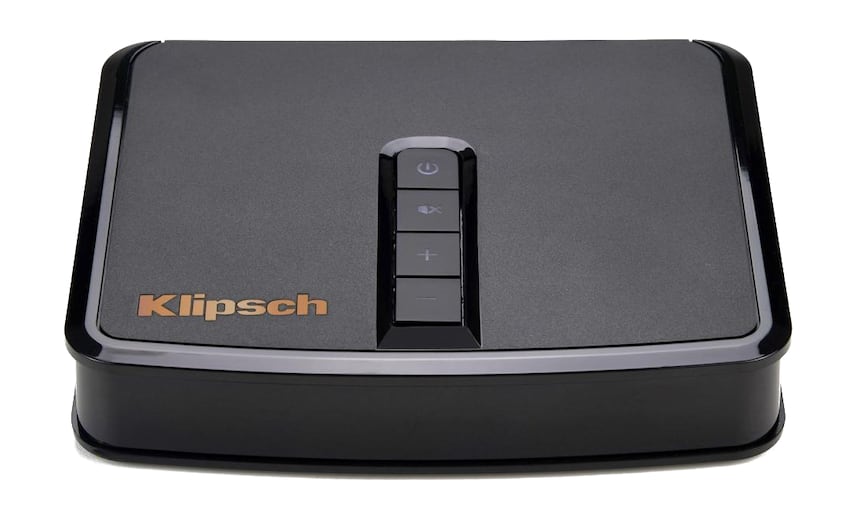
The major part of the surface of the top of the box, built in plastic resin, offers a grainy texture stamped with the name of the brand, while a banner hosts four command keys: power on/off, mute, volume up and volume down.
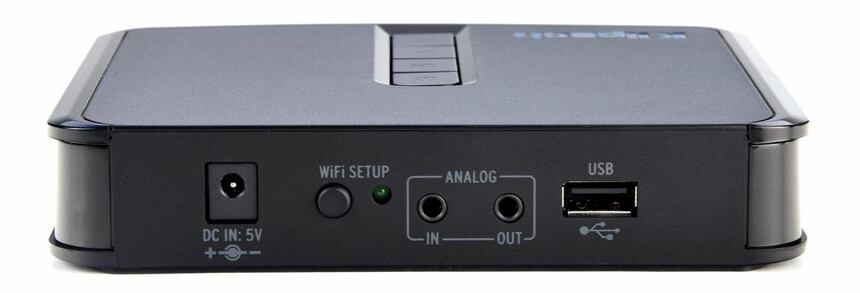
At the rear of the box, you’ll find the coaxial plug for the power supply, the pushbutton switch for the Wi-Fi pairing and its green indicator LED, one Jack 3.5mm analog audio input and one output, the input being replicated on the output in the absence of any source selection via the application (the signal being evidently, according to the rather taciturn user manual, also broadcasted via the Wi-Fi network of the Gate streamer), and finally a USB A plug to either update the firmware or the DTS Play-Fi® application.
Manufacturing
The entirety of the surface of the bottom of the housing is occupied by the main card on which is connected the Wi-Fi card, a Hansong (Nanjing) Technology Ltd Caprica 2L module, specifically made for DTS Play-Fi®, possessing a Marvell PXA166 ARM processor as a core, and linked to two small antennas fixed on the sides of the box.
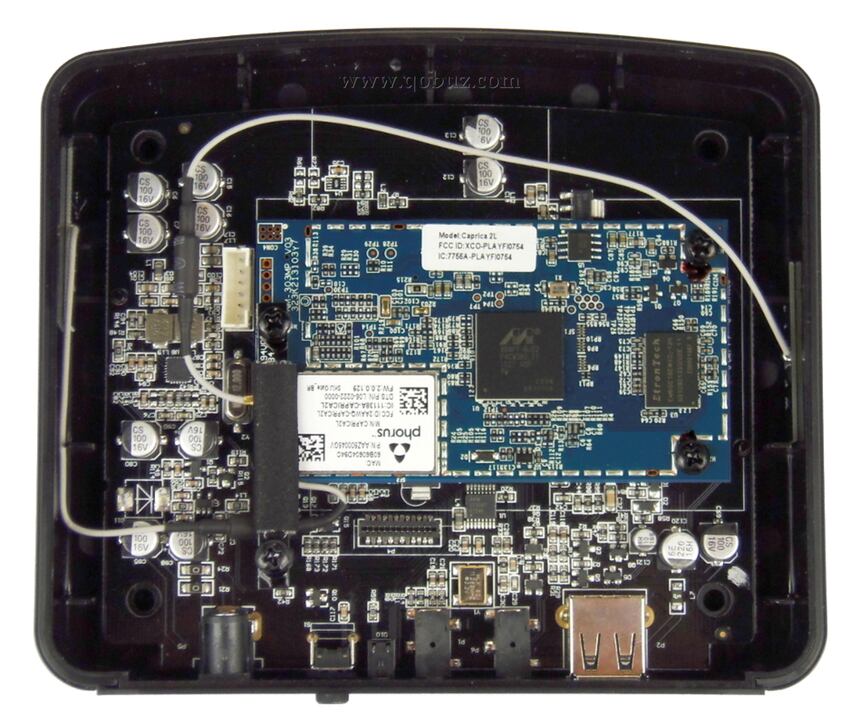
The voltage coming from the power supply is handled by a Texas InstrumentsTPS65270 switching regulator delivering two different voltages. Just besides, you can see the microcontroller, a STMicroelectronics STM32F030 running at 32 bits. Then comes the Asahi Kasei AK4720 digital-to-analog converter that will digitalize the analog signals coming from the Jack input at 24 bits.
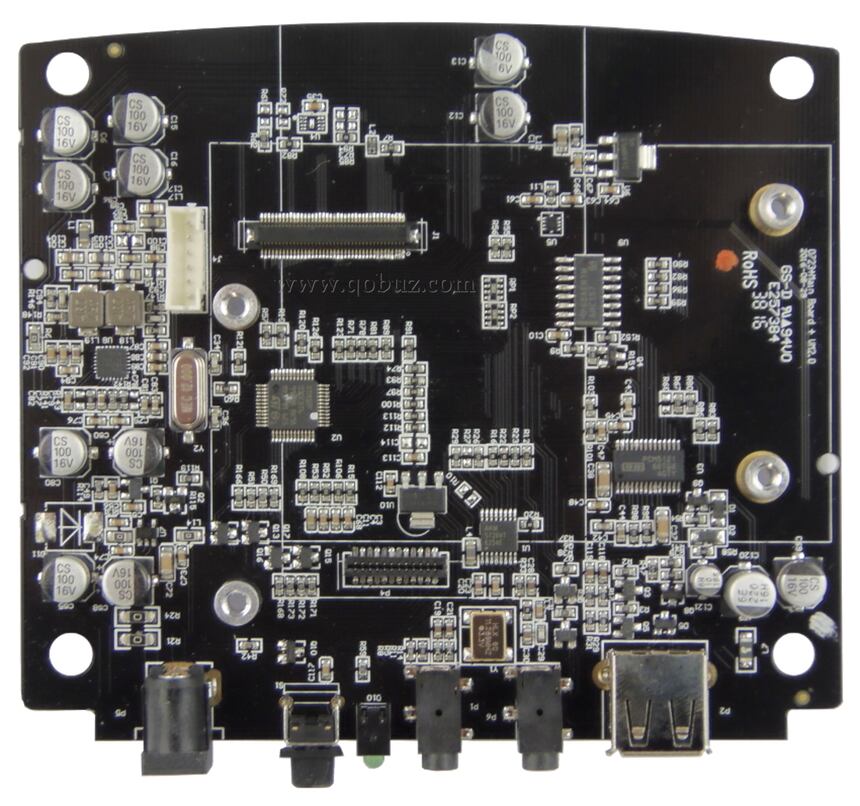
A little bit to the right, you’ll find a Burr-Brown PCM5121 chip handling the digital-to-analog conversion of the digital signals. It possesses a charge pump generating a symmetrical negative voltage of its positive electrical supply in order to remove the coupling capacitors (leading to an extended response in the bass and no risk of coloration). It also doesn’t require post-filtering thanks to its advanced voltage segmenting architecture (which means a better musicality according to us by removing the active filters with operational amplifier using a very high feedback rate). It remains to be seen if the integrated signal processor is used.
Sound
Our listening tests have been made with the Klipsch Stream for Android application run from a tablet (the display can be used either in landscape or portrait mode) and with our Sony UDA-1 amplifier linked to our Triangle Antal Anniversary speakers.
Below, you’ll see the very classy homepage of the Klipsch Stream application, decorated with the blazon of the brand… We’ll remark nonetheless that the Klipsch user manual is rather lacking and that neophytes may be a bit at a loss. By clicking on
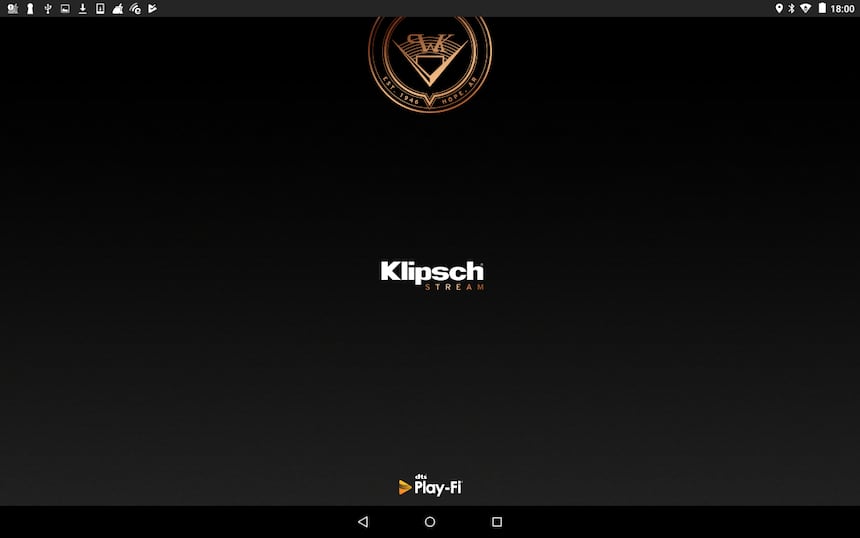
As we could expect by using a Burr-Brown PCM5121 digital-to-analog converter without post-filtering, the sound reproduction offered by the Klipsch Gate streamer is particularly vivid and displaying all the details coded on the digital audio files, and this either when you play files from the Qobuz app or in local mode from the Music option that allows you to access the stored files.
We’ve thus enjoyed a restitution of Carl Orff ‘s Carmina Burana performed by the London Philharmonic Choir and the London Philharmonic Orchestra conducted by Hans Graf, whose richness of tones, variety of moods and vivacity, as well as the quieter scenes, receive the same care with an excellent aeration and give a great feeling of sonic truth.
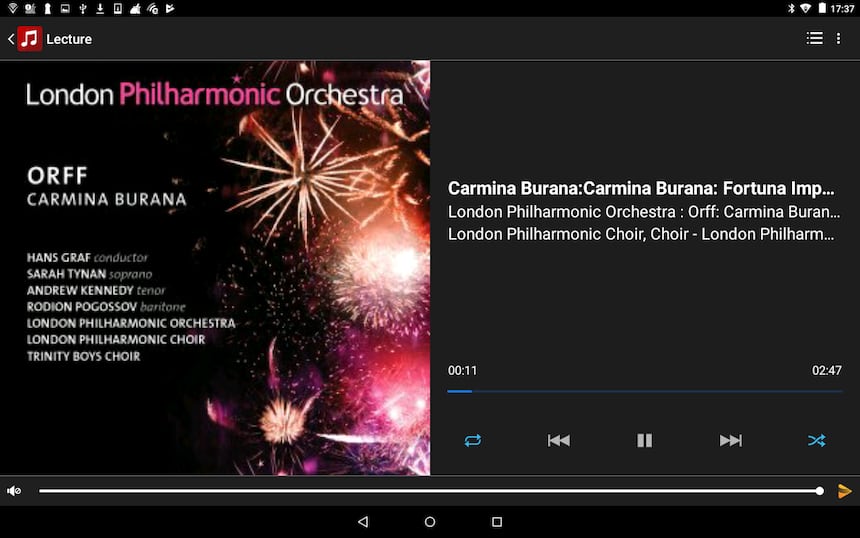
The Klipsch Gate streamer also makes us enjoy all the salt and rhythm of the famous Allegro moderato from Tchaikovsky’s Violin Concerto interpreted by Patricia Kopatchinskaja on violin and the MusicAeterna ensemble conducted by Teodor Currentzis, zooming on each and every detail of the very personal vision of the soloist and reproducing with strength and bloom the orchestral soars. It’s a great show in high definition.
With the Bee Gees’ album Size Isn't Everything, we get an earful, in a good way; the diverse songs are both dissected and restituted with all their substance and characteristics, with no frills but without betraying their message or their emotion, and the title Heart Like Mine can make people cry. In short, this is how we like to hear this album the most.
Restitution full of greatness and power, but with air and a definition of the sounds from the deepest bass to the highest treble, and with respect for the voice of Freddy Mercury, of the title The Great Pretender from Queen’s album The Platinum Collection
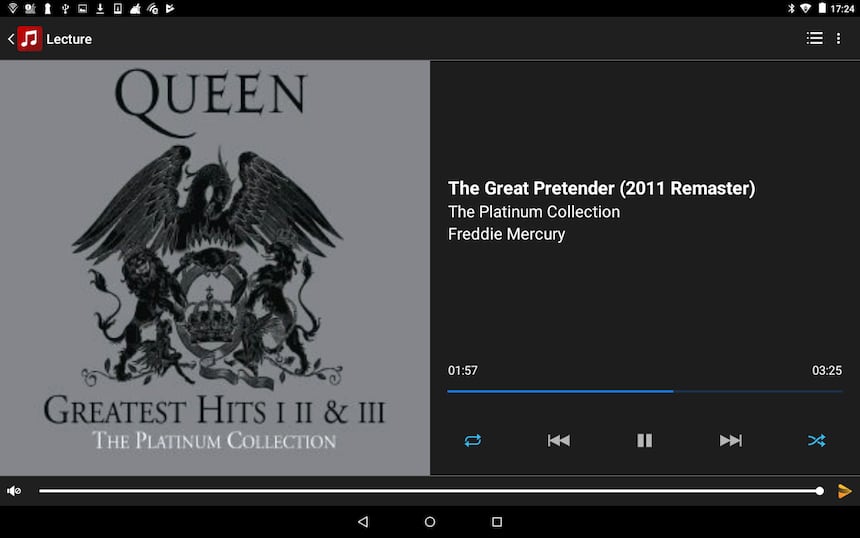
To conclude, the Klipsch Gate network player offers sonic results that we enjoyed a lot, and if its user manual is somewhat succinct, the Klipsch/DTS Play-Fi® application helps a lot to get familiar with the device, and, even if the menu of the Qobuz part could be perfected, in the end it’s rather easy to use.
Klipsch Website French DTS Play-Fi® Website
To follow everything that happens on Qobuz, join us on Facebook!
If you are a manufacturer, importer, retailer or key player in the digital music industry and wish to contact us, you can do it through the following email address: newstech@qobuz.com
If you’re enthusiastic about the Hi-Fi Guide column and wish to contact us, you can do it through the following email address: rubriquehifi@qobuz.com


